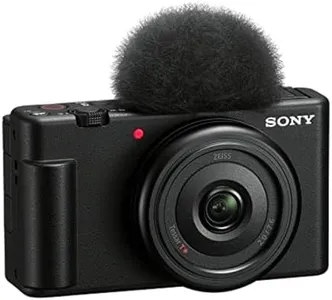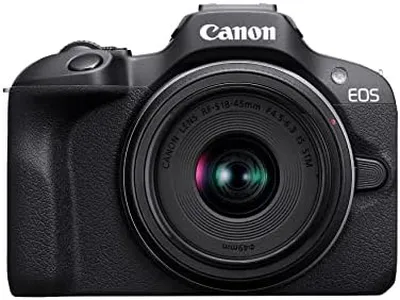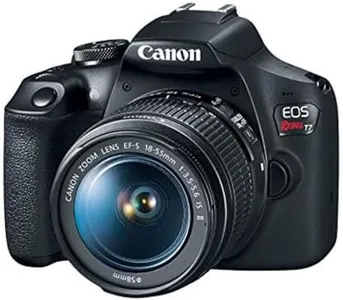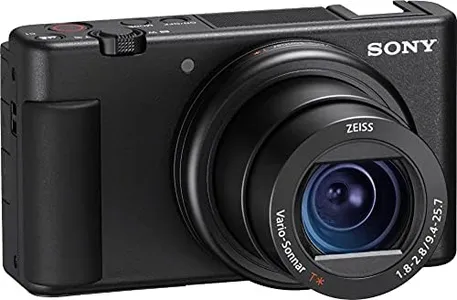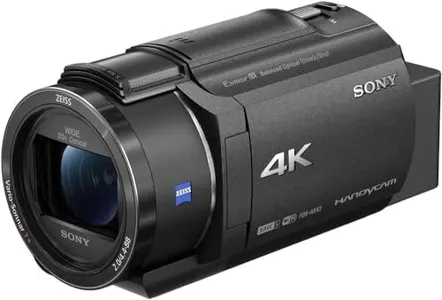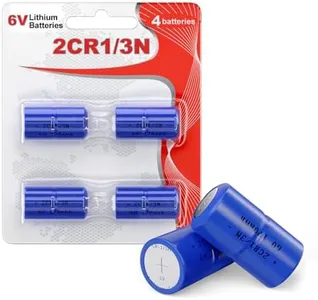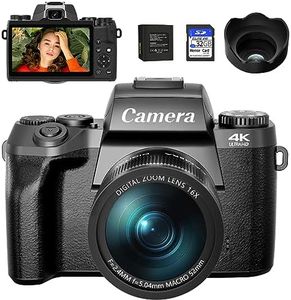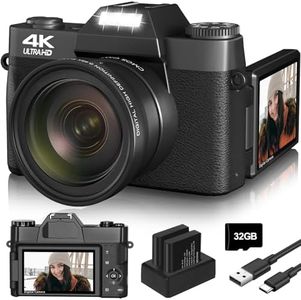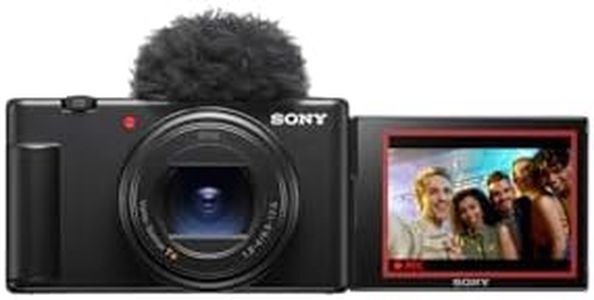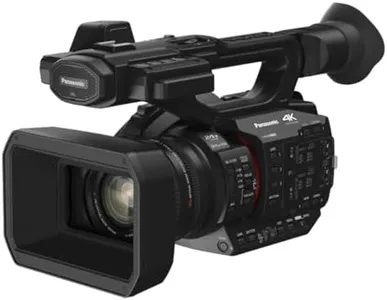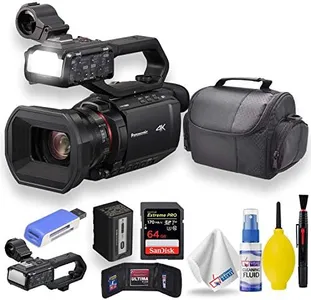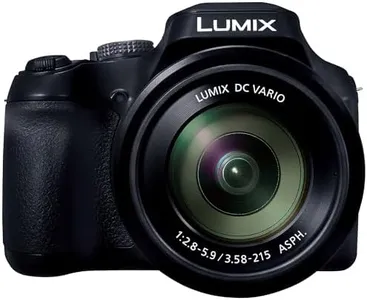10 Best Cameras For Video Blogs 2025 in the United States
Our technology thoroughly searches through the online shopping world, reviewing hundreds of sites. We then process and analyze this information, updating in real-time to bring you the latest top-rated products. This way, you always get the best and most current options available.

Our Top Picks
Winner
Sony ZV-1F Vlog Camera for Content Creators and Vloggers Black
Most important from
1482 reviews
The Sony ZV-1F Vlog Camera is a strong choice for content creators and vloggers, offering several features tailored specifically for video blogging. One of its major strengths is its ultra-wide 20mm lens, which ensures you can get everything in the frame even when holding the camera at arm's length. The large 1-inch sensor and F2 aperture are excellent for low-light conditions and creating a pleasing background blur, enhancing the quality of your videos.
The camera's Eye-AF and autofocus tracking technology are impressive, helping to keep your face in focus as you move around, which is essential for vlogging. The side-articulating touchscreen LCD makes composing shots, especially selfies, straightforward and user-friendly. Audio quality is robust thanks to the directional 3-Capsule mic and windscreen accessory, ensuring clear voice recording even in windy conditions.
Digital image stabilization is available, although not as effective as optical stabilization, which may be a drawback for those planning to do a lot of handheld shooting. The battery life could be a limitation for longer shoots, requiring you to carry extra batteries or a power bank. The camera is lightweight and compact, making it easy to carry around. In summary, the Sony ZV-1F is highly suited for vloggers looking for a compact, feature-rich camera with excellent video and audio capabilities.
Most important from
1482 reviews
Canon EOS R100 Mirrorless Camera with RF-S18-45mm F4.5-6.3 is STM & RF-S55-210mm F5-7.1 is STM Lenses, APS‑C Sensor, 24.1 MP, 4K Video, Lightweight Vlogging Camera for Entry-Level Creators, Black
Most important from
787 reviews
The Canon EOS R100 is a compact and lightweight mirrorless camera that makes a good choice for video bloggers looking for portability without sacrificing too much on quality. It offers 4K video recording, which delivers sharp visuals, and its 24.1 MP APS-C sensor helps produce clear, detailed images and videos. Autofocus is a strong point here thanks to Dual Pixel CMOS AF with 143 focus points and eye detection, which keeps subjects sharply in focus during filming—a helpful feature for solo vloggers.
The camera's optical image stabilization in the lenses helps reduce shaky footage, though it might not be as smooth as specialized gimbals. Audio is captured by built-in stereo microphones, which is decent but vloggers wanting top sound quality might want an external mic, as there is no dedicated audio input. Low light performance is fair with an ISO range up to 25600, but the kit lenses have narrow maximum apertures (f/4.5-6.3), which limits brightness in darker settings. Battery life is average and the camera weighs under a pound, making it easy to carry for long shooting days.
Connectivity options like Wi-Fi and Bluetooth allow quick file transfers and remote control via smartphone apps, convenient for vloggers on the move. While the camera doesn't have advanced video features like high frame rates beyond 4K at 30fps or in-body stabilization, it is a solid, beginner-friendly option for those starting out or wanting a reliable, budget-friendly vlogging setup with versatile zoom lenses included.
Most important from
787 reviews
Canon EOS Rebel T7 DSLR Camera with 18-55mm Lens | Built-in Wi-Fi | 24.1 MP CMOS Sensor | DIGIC 4+ Image Processor and Full HD Videos
Most important from
8252 reviews
The Canon EOS Rebel T7 DSLR Camera with 18-55mm lens is a solid choice for video bloggers looking to get started with high-quality video capture. With its 24.1 MP CMOS sensor and DIGIC 4+ image processor, it delivers excellent image quality and Full HD 1080p video resolution. The camera's built-in Wi-Fi and NFC make it easy to transfer your videos to other devices or share them online quickly, which is a big plus for vloggers on the go.
The 9-point autofocus system is decent, though it might not be the fastest or most advanced, which could be a minor drawback for those needing quick focus adjustments during dynamic shots. However, it should suffice for most vlogging scenarios where the subject is relatively stationary or the movement is predictable. The camera performs well in good lighting conditions but may struggle in low-light environments despite the ISO range extending up to 12800. It features image stabilization which is beneficial for handheld shooting, but the lack of in-body stabilization and reliance on lens-based stabilization might be less ideal for more dynamic, on-the-move vlogging.
Audio quality is acceptable, though using an external microphone would likely yield better results for professional-sounding audio. The battery life, averaging around 500 photos per charge, should be adequate for a day of shooting, but having a spare battery is advisable. Portability is a strong point here as the camera weighs just 1 pound, making it easy to carry around. Connectivity options include USB, HDMI, and wireless technologies, providing flexibility in setting up and transferring content.
The Canon EOS Rebel T7 is best suited for beginner to intermediate video bloggers who prioritize image quality and ease of use but may not need the top-tier features of more advanced, professional models.
Most important from
8252 reviews
Buying Guide for the Best Cameras For Video Blogs
Choosing the right camera for video blogging is crucial to ensure you produce high-quality content that engages your audience. When selecting a camera, consider the type of videos you plan to create, your filming environment, and your level of expertise. Here are some key specifications to consider and how to navigate them to find the best fit for your needs.FAQ
Most Popular Categories Right Now


